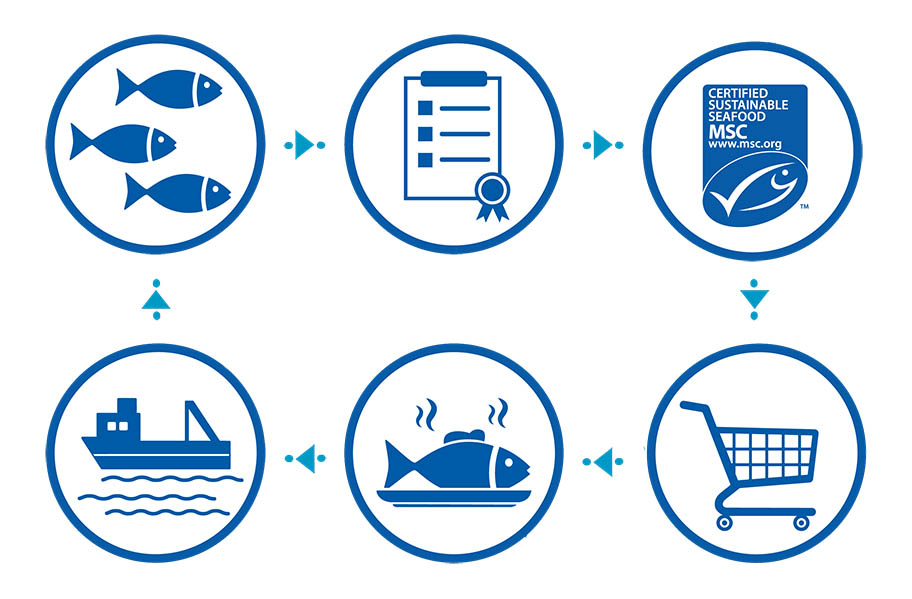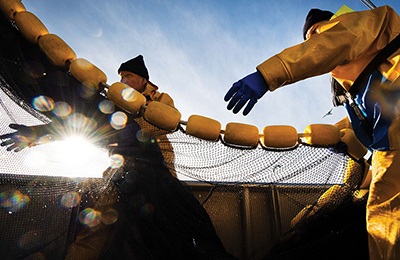The MSC approach means everyone can play a part in protecting the future of our oceans and fish stocks while enjoying seafood, not avoiding it.
Our job is to help the management of these resources so that they remain available to future generations.
What does the MSC do?
We set standards for sustainable fishing and for the supply chains that sell sustainable fish and seafood.
Our label helps you recognise fish and seafood that is certified to our standards.
How does the MSC help?
When you buy a product with our blue MSC ecolabel you become part of a virtuous loop, where every part is helping to protect fish stocks and healthy oceans. We call this our Theory of Change.
Here's how it works:
Fisheries that meet the MSC Standard are independently certified as sustainable
Retailers and restaurants choose to sell and serve MSC certified sustainable seafood
A certified supply chain assures consumers that only seafood from an MSC certified fishery is sold with the blue MSC label
Consumers preferentially purchase seafood with the blue MSC ecolabel
Market demand for MSC certified seafood increases
More fisheries choose to improve their practices and volunteer to be assessed to the MSC Standard

Is the MSC approach working?
Since our formation in 1997, the sustainable seafood movement has grown and:
Over 500 fisheries around the world are now independently certified to the MSC Fisheries Standard.
Over 20,000 MSC labelled products are on sale in over 60 countries.
Over 46,000 sites hold MSC Chain of Custody certificates, making up a global sustainable seafood supply chain.
60% seafood consumers surveyed in 2021 say they the MSC label would make them more likely to purchase a product.
We're helping more fisheries move towards sustainability with tools and grants through our Global Ocean Stewardship Fund, and research grants are helping sustainable fisheries improve their practices even further.
Fisheries certified to our Standard have already made hundreds of environmental improvements, including many that benefit endangered species and habitats or reduce bycatch.
There is always more work to be done, but we think it's working.
What you can do
Support the movement for change by buying, cooking and eating sustainable fish and seafood.




